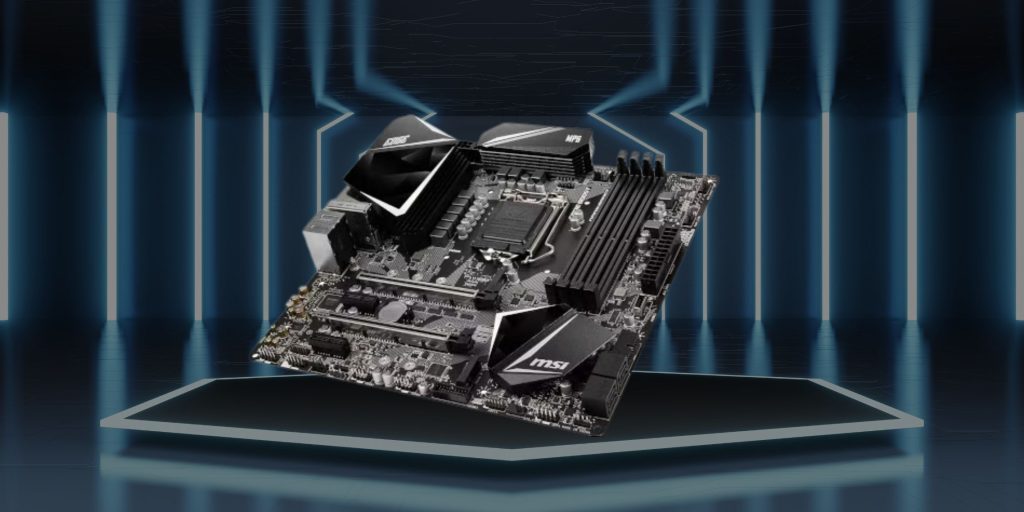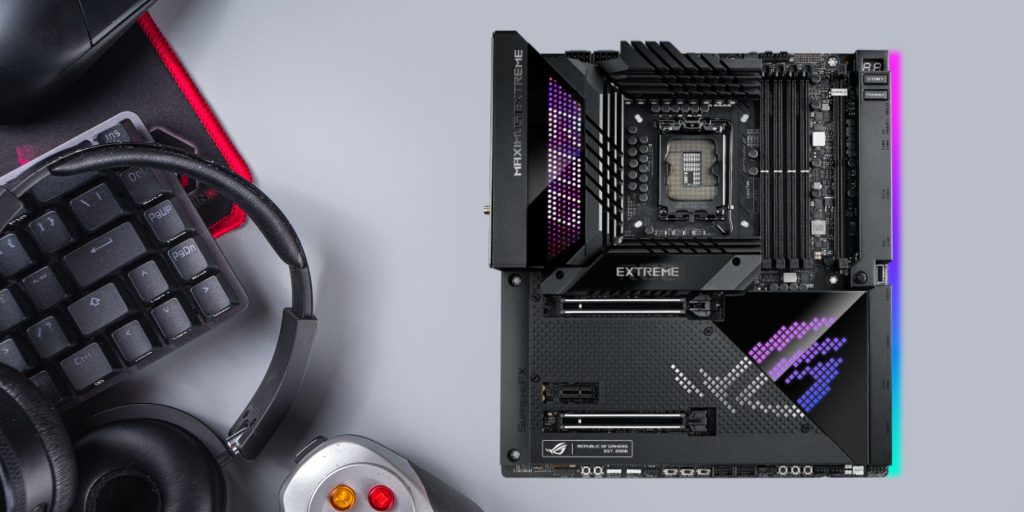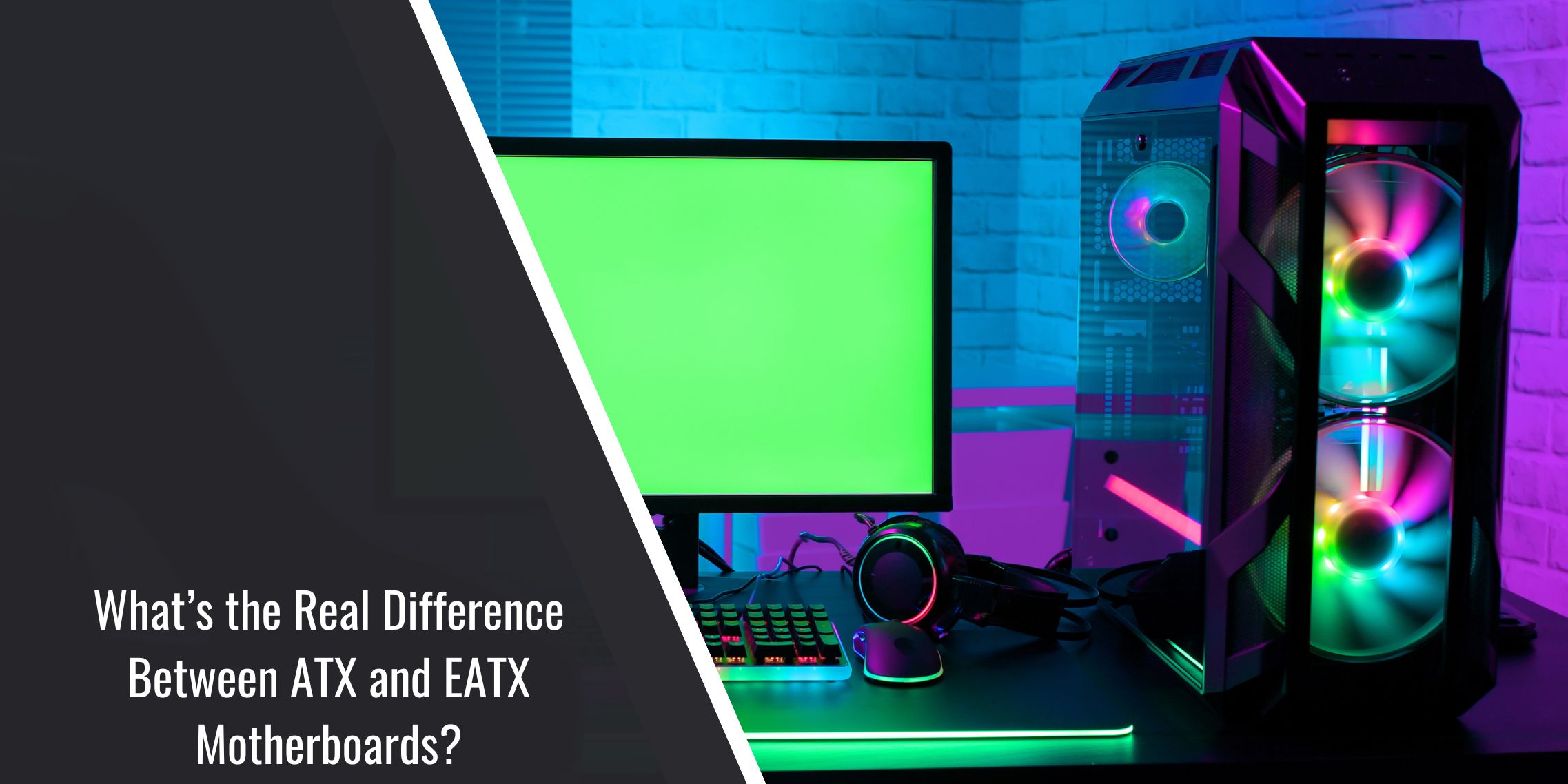I was building my gaming PC and thought the hardest part would be picking a graphics card. Turns out, choosing the right motherboard confused me even more. ATX looked normal, but EATX had more space and ports. I didn’t know what was better for my case or setup. So I did what most people do — searched, read, compared, and kept going in circles.
If you’re wondering which one to choose for your PC, you’re not alone. This guide will make it simple and show the real differences between ATX and EATX.
What Is an ATX Motherboard?

ATX is the standard motherboard size for most desktops. It measures about 12 inches wide and works well in mid-tower or full tower cases. It supports up to four RAM slots and enough PCIe slots for one or two cards.
Many people choose ATX because it’s just the right size. It’s big enough for most builds but small enough to fit into a regular case. You get a good balance of ports, expansion, and airflow without making the setup harder.
What Is an EATX Motherboard?

EATX means Extended ATX. It’s wider than ATX and made for bigger builds. It’s mostly used in editing machines, heavy gaming rigs, or workstations. These boards are around 13 inches wide and can support more features.
With EATX, you often get extra RAM slots, more PCIe lanes, and stronger power phases. Some even support multiple graphics cards. But they don’t fit in every case, and they usually cost more. You need a full tower and some extra patience during the build.
ATX vs EATX: What’s the Real Difference?
Here’s a breakdown of how they compare:
- ATX is smaller, fits more cases easily
- EATX gives more RAM slots and extra expansion options
- EATX supports more PCIe slots for added hardware
- ATX is usually easier to build with and has fewer cable issues
- EATX often has better power delivery and fan control
- ATX boards are cheaper and more beginner-friendly
- EATX boards can block parts of your case if it’s not designed for them
Which Cases Fit ATX and EATX?
Most mid-tower cases are built for ATX. You’ll have enough room for fans, drives, and cable routing. These cases are easy to find and come in many price ranges.
EATX boards need full tower cases. And not every full tower truly supports full-width EATX. Some cases claim to support EATX but leave no space for cables or airflow. That’s why checking pictures and reviews helps. Always check your case’s specs before buying. If the EATX board is too wide, it might block holes or overlap drive bays, making building harder.
Gaming vs Workstation: Which One Is Right?
Here’s how you decide between them:
- If you’re building a gaming PC or regular desktop, go with ATX
- If you’re editing videos, using lots of RAM, or doing 3D work, choose EATX
- ATX works best with one GPU and light upgrades
- EATX supports more hardware, but you must plan space and airflow
- ATX keeps costs low and makes building easier
- EATX gives more power, but it’s not needed unless you use it all
Most gamers and casual users don’t need EATX. It sounds powerful, but if you’re not using its features, it just adds size and cost.
Quick Tips Before You Buy ATX and EATX
Here are a few things to double-check before picking your board:
- Double check your case size and motherboard support
- Don’t assume all full towers fit EATX fully
- Think about what you really need in your setup
- EATX might block airflow or cable paths in some builds
- Make sure your power supply has enough connections
- Look at fan placement before installing
- Some EATX boards need more cooling than expected
- Always plan your layout before you install anything
Conclusion
Both ATX and EATX are strong choices, but they serve different types of users. ATX is great for most builds. It’s simple, it works, and it gives you everything you need for a gaming or personal PC.
EATX gives more space and features, but it’s not always necessary. It works best when you’re pushing your system with high loads or stacking hardware. Don’t go bigger unless your build needs it.
Still not sure? Share your parts list or case and I’ll help you decide what fits your build best.



